|

Identification Key to Common Families

|
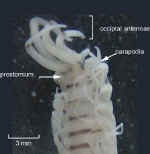 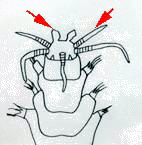
 Onuphidae Onuphidae |
|
b)
Palps are fused to the prostomium,
so that, the latter appears to form a cleft anteriorly |
 
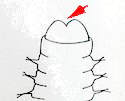 |
|
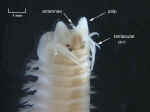

 Nereidae Nereidae |
|
b)
Pharynx usually without jaws and papillae on the surface
of pharynx, but have distal papillae; parapodia are
uniramous |
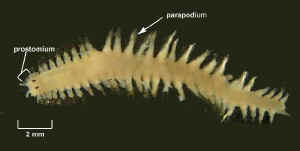 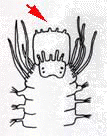
 Hesionidae Hesionidae
|

|
